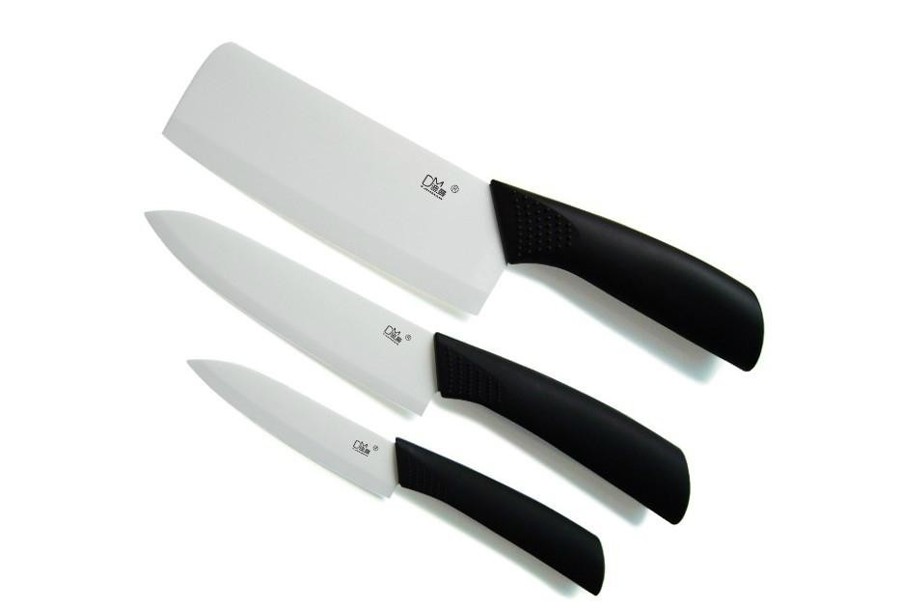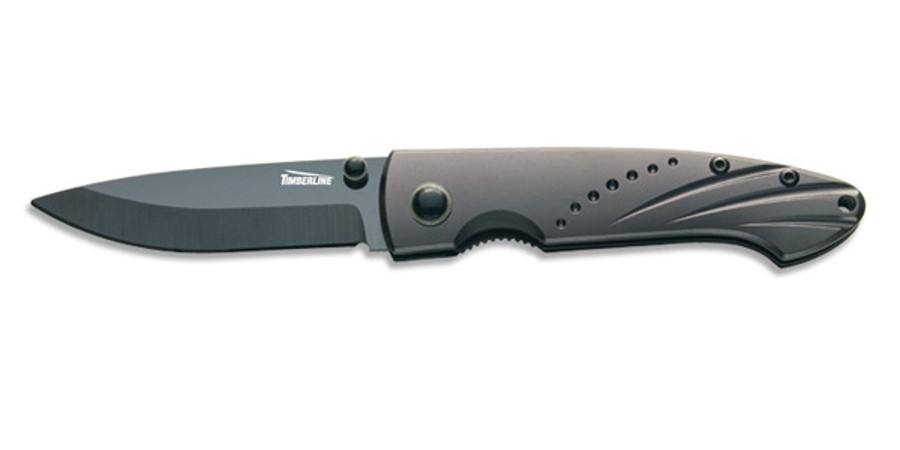Ceramic knives, ZrO2 ceramics
Processed zirconia finds applications, perhaps most famously today, in the production of knife blades, not just kitchen ones. Zirconia ceramic achieves a hardness value of over 8 on the hardness scale. The hardest on this scale is diamond with a value of 10, which is used for sharpening the blades of these knives. Interesting is the comparison with steel commonly used for blade production, which achieves values of 5 to 6 on this scale.

Properties and advantages that ceramics bring
Ceramic knives offer low weight, resistance to corrosion and incredible durability - technical ceramics is a modern miracle. A ceramic knife maintains its edge, compared to a regular steel blade, for at least 10 times longer. This provides the user with an excellent cutting tool that will not require sharpening for a long time - just sharpening once every few years is sufficient! The non-rusting blade is ideal for diving knives. The non-conductive and non-magnetic blade is ideal for pyrotechnics use.
Blade of the ceramic knife
- remains sharper longer than a steel blade
- is more wear-resistant than a steel blade
- is harder than steel
- does not rust
- is easy to clean
- is resistant to acids and oils
- is electrically non-conductive
- does not react to magnetic fields
- provides easy and comfortable use
- allows precise slicing
- does not affect the taste or smell of food
- does not damage the vitamins in sliced fruits
Disadvantages that ceramics bring
Should not be used for prying and similar activities, which may result in the breaking of the blade or chipping of the material! Do not use for cutting meat with bones! While the blade can cut into deeply frozen foods, bones, or very hard bread, movements outside the cutting axis may not be withstood by the blade. Cutting should occur only with forward and backward movements and definitely not with rocking or prying. A ceramic knife poorly tolerates pressure from the side, so it cannot be used, for example, to crush (smash) garlic. Most manufacturers do not cover such activities under their warranty. Given the extreme hardness of ceramic knives, which are more brittle than traditional steel blades, they can break when dropped (just like any ceramic product).

These flaws have been partially resolved by companies like Ceratio with a special technology called NeoFlexy, thanks to this unique manufacturing process the knives are more flexible and resistant to breaking or chipping, lighter, and their blade is also much smoother.
Some manufacturers offer ceramic knives with a black blade, produced using HIP technology (Hot Isostatic Pressing), which eliminates the main disadvantage, their significant brittleness. In this process, the blade is subjected to sintering at higher temperatures and pressures in special high-pressure vessels and usually in an argon atmosphere. This gives the ceramics higher density and thus increased durability.
Ceramic knives represent increased security risks, for example in air transport, since they cannot be detected using metal detectors. Therefore, metal components are added to the knives so that they can be detectable by standard means. Purely ceramic knives can be detected with high-frequency detectors.




























































































































